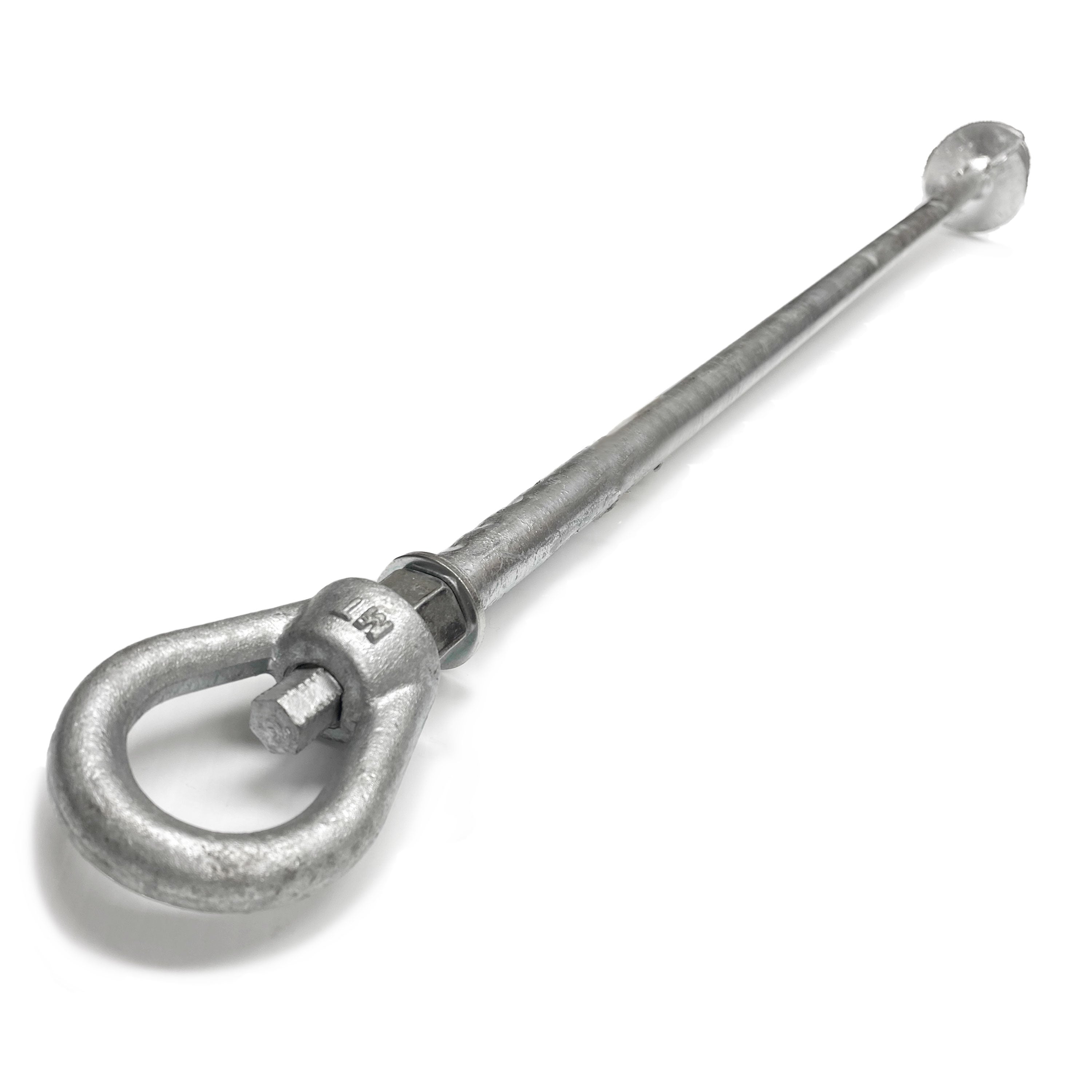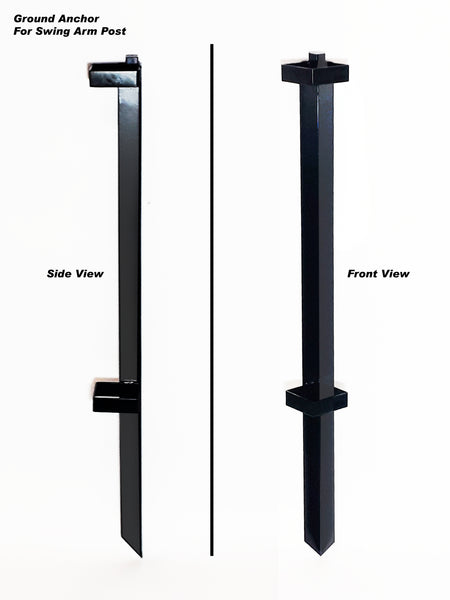The Benefits of Getting a High-Quality Ground Anchor for Safety
The Benefits of Getting a High-Quality Ground Anchor for Safety
Blog Article
Check Out the Different Sorts Of Ground Anchor for Your Next Task
From auger anchors, which stand out in diverse dirt problems, to stake supports created for short-lived setups, the alternatives are countless. In addition, concrete and screw supports present one-of-a-kind benefits in specific circumstances, while deadman supports are customized for applications calling for resistance to lateral forces.

Auger Anchors
Auger supports are a preferred choice in various building and construction and landscaping tasks because of their special layout and reliable anchoring capacities. These anchors include a helical screw-like shaft that is driven into the ground, allowing for a steady and protected hold. The spiral layout helps with simple setup and takes full advantage of resistance versus lateral pressures, making auger anchors particularly reliable in applications such as fence, short-term structures, and disintegration control.
The installment process of auger anchors is reasonably simple. Auger anchors can be quickly eliminated and reused, which adds to their cost-effectiveness and sustainability.
One of the substantial advantages of auger supports is their capability to distribute lots evenly throughout the surrounding soil, reducing the danger of soil disruption and minimizing ecological effect. In addition, they are less at risk to heaving or loosening up gradually compared to standard anchoring methods. Subsequently, auger supports are an outstanding choice for tasks requiring durable and trustworthy anchoring options.

Risk Anchors
When it involves protecting frameworks in a range of exterior applications, risk anchors offer a trustworthy and uncomplicated service. These anchors are normally created from long lasting products such as steel or aluminum, created to endure environmental anxieties while supplying ideal stability. Their simple style enables quick installation, making them a perfect choice for momentary or permanent anchoring requirements.
Risk anchors are particularly helpful in securing tents, covers, and various other light-weight structures versus wind and weather condition. They function by being driven into the ground at an angle, creating a solid hold that resists pull-out forces - Ground Anchor. The effectiveness of risk supports relies on numerous factors, including dirt kind, dampness content, and the angle of installment
For included safety, several stake supports feature accessory points for bands or ropes, enabling tension adjustments as essential. In applications such as landscaping or construction, they can properly support tools or structures on uneven terrain. On the whole, risk anchors supply a cost-efficient and versatile option for safeguarding various exterior installations, making them a preferred option for contractors and DIY lovers alike.
Concrete Anchors
Concrete anchors provide a robust remedy for securing structures to concrete surfaces, making sure security and safety in different applications. These anchors are vital for projects ranging from household constructions to large-scale industrial setups. They can be found in different types, including growth anchors, sticky anchors, and undercut supports, each developed for particular load requirements and environmental problems.
Sticky anchors make use of high-strength epoxy or resin to bond the anchor to the concrete, using exceptional load-bearing abilities, specifically in cracked concrete circumstances. Undercut anchors create an one-of-a-kind shape within the concrete, providing exceptional holding power, specifically in applications where tensile tons are common.
When implemented correctly, concrete supports substantially improve the structural stability of different jobs, making them important in contemporary building and construction methods. Understanding the particular requirements of your project will certainly help in choosing the best type of concrete support for the job.
Screw Anchors

Screw anchors are a versatile attaching solution that can be successfully employed in a range of applications where conventional concrete supports may not be sufficient. These look what i found supports contain a helical design that allows them to be easily driven into the ground, making them suitable for use in soil and various other substrates. Their distinct framework supplies excellent holding power and resistance to pull-out pressures, making them appropriate for countless projects, from landscape design to architectural support.
One of the main benefits of screw supports is their simplicity of installment. They require marginal equipment and can often be installed without the demand for excavation, which saves both time and labor prices. Additionally, screw anchors can be removed and recycled, offering a lasting service for short-term applications.
Screw supports are particularly beneficial in locations where dirt problems are challenging, such as sandy or loose soils. Their capability to be mounted at varying depths enables customization based on specific task requirements. Overall, screw supports give a efficient and trusted securing approach, making them an exceptional choice for designers and contractors seeking efficient solutions for their tasks.
Deadman Anchors
Deadman supports offer as a durable remedy for stabilizing frameworks in difficult conditions, particularly where typical anchoring techniques may drop short. These anchors contain huge, hefty objects hidden underground, which develop resistance versus lateral pressures. The style commonly includes a horizontal element, such as a block of concrete or a steel plate, buried in the soil, to which bands or cable televisions are attached.
The effectiveness of deadman anchors depends on their capability to disperse loads over a bigger area, minimizing the threat of failure in unsteady soil problems. They are particularly beneficial in applications such as maintaining walls, temporary structures, and slope stablizing, where dirt motion can endanger the honesty of the framework.
Installment of check here deadman supports requires careful planning to ensure they are placed at the appropriate depth and orientation, maximizing their load-bearing ability. While they might need even more labor and material than lightweight anchors, their reliability in negative problems makes them very useful for long-lasting projects. In addition, deadman anchors are versatile and can be adapted to numerous applications, making them a best option for engineers encountering one-of-a-kind difficulties in their jobs.
Verdict
Auger supports succeed in diverse soil conditions, while risk supports fit momentary applications. For concrete surface areas, expansion and sticky supports offer trusted choices, and screw supports supply adaptability in challenging surfaces.
Furthermore, concrete and screw supports present unique benefits in specific circumstances, while deadman supports are customized for applications requiring resistance to lateral forces - Ground Anchor.Auger supports are a prominent option in various building and landscaping tasks due to their one-of-a-kind layout and effective securing capacities. They come in different types, consisting of growth anchors, glue anchors, and undercut supports, each made for particular load requirements and environmental problems
Adhesive anchors utilize high-strength epoxy or resin to bond the anchor to the concrete, offering remarkable load-bearing capacities, specifically in fractured concrete scenarios. In general, screw anchors supply a reliable and dependable webpage anchoring method, making them an exceptional choice for service providers and designers seeking reliable remedies for their jobs.
Report this page